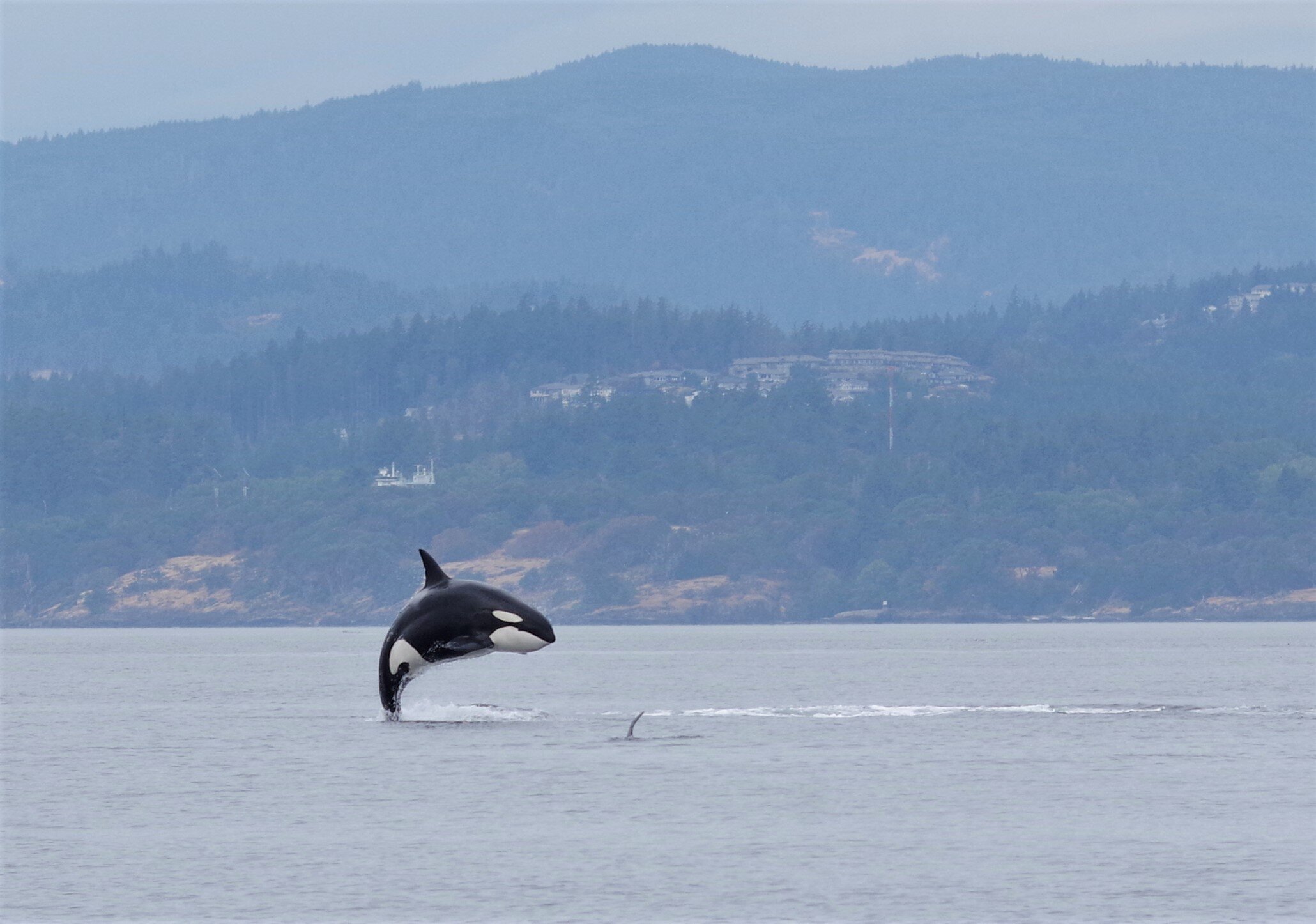Nearly 30 Bigg’s Killer Whales Spotted Locally Over Labor Day Weekend
T37A “Volker”, mom of five, breaches. Photo: Bart Rulon, Puget Sound Express, PWWA
Nearly 30 Bigg’s Killer Whales Spotted Locally Over Labor Day Weekend
New Yearly Sightings Record Set in 2021
SEATTLE, WA & VICTORIA, BC - September 8, 2021 - The Pacific Whale Watch Association reported seeing nearly different 30 Bigg’s killer whales over the Labor Day holiday weekend in the Salish Sea, the body of water that includes the Puget Sound, Strait of Georgia, Strait of Juan de Fuca, and the San Juan Islands. This coincides with local research organization Orca Behavior Institute (OBI) recently announcing some good news about Bigg’s killer whales in the area.
According to OBI’s Director, Monika Wieland Shields, Bigg’s have set a new sightings record in the region, with 793 unique sightings of Bigg’s killer whales as of Monday, and more than four months still remaining in 2021. The previous record of 747 unique sightings was set in 2019. A “sighting” is a report of a unique group of whales on a given day. Meanwhile, Shields also states more than 70 different Bigg’s killer whales were documented just last month in the Salish Sea. Killer whales are identified using markings on their dorsal fins and backs.
Captain Paul Pudwell of Sooke Coastal Explorations, based in Sooke, BC, came across seven different families of Bigg’s killer whales on a single 3-hour trip on Saturday. “I’ve never seen so many Bigg’s at once”, says Pudwell. “It was a special day.”
Unlike endangered Southern Resident killer whales that feed primarily on declining populations of Chinook salmon, Bigg’s killer whales hunt seals, sea lions, and porpoises. An abundance of food has led to the births of more than 130 calves over the last decade, a population growth rate of more than 4% per year. Naturalist Bart Rulon of Port Townsend and Edmonds-based Puget Sound Express had a memorable encounter with one Bigg's family known as the T37A’s. At the age of 27, matriarch T37A “Volker” has given birth to five babies since 2007. Rulon and passengers saw Volker breach completely out of the water multiple times.
Once referred to as transient killer whales, the whale watching and research communities have transitioned toward labeling them Bigg’s killer whales after orca research pioneer Dr. Michael Bigg. Bigg’s killer whales are now one of the primary types of whales seen by local whale watchers. With an almost daily presence, the name “transient” no longer seems fitting. Conversely, due to dwindling salmon returns, Southern Resident killer whales have been largely absent in 2021, seen just a handful of days since April.
“The contrast in health between these two orca populations is striking,” says Erin Gless, Executive Director of the Pacific Whale Watch Association. “Bigg’s prove that killer whales can thrive in this region, so long as there is food. If we can restore local salmon populations, we have hope that Southern Residents can recover. The priority has to be getting them more food.”
Recently, a young member of the salmon-eating Southern Resident population, J56 “Tofino”, was observed by scientists with the research group SR3 in poor health. As a result, J56 was deemed “vulnerable” by Washington Department of Fish and Wildlife meaning licensed whale watching companies may not approach within 1/2 nautical mile of J56 if she is seen in the area. The PWWA is urging all boaters on the Salish Sea to follow these professional regulations.
Southern Residents belonging to J Pod were reported in Puget Sound on Tuesday. Bigg’s killer whales were also spotted in Puget Sound Tuesday as well as near Victoria and the San Juan Islands.
A Bigg’s killer whale defies gravity near Victoria. Photo: Paul Pudwell, Sooke Coastal Exploratiosns, PWWA
Bigg’s killer whales in the San Juan Islands. Photo: Nina Hall, Western Prince Whale Watching, PWWA
T19C “Spouter”. Photo: Melisa Pinnow, San Juan Excursions, PWWA




